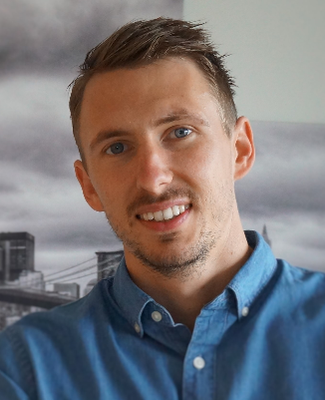Reporting from IASS 2023, Melbourne
Being born and raised in Australia, when the conference came to Melbourne on July 10-14 of this year, I was very eager to take part in this prestigious conference on my home turf to deliver a presentation on generating spatial connections with IDEA StatiCa.
Maintaining the innovative spirit
Not only did IASS 2023 provide the perfect opportunity to network with many key industry players, it was also the ideal place to hear keynotes that confirmed, or denied, the direction of many of the innovations in our field.
So, during the day, I went to presentations to be inspired by some of the many new and exciting approaches shared there by the speakers, and I attended the gala dinner and networking drinks in the evening to rub shoulders with those in the know.
It's all in the presentation
In addition, I wanted to take advantage of the conference to evangelize some of the cutting-edge research we are carrying out at IDEA StatiCa. Therefore, I submitted an abstract about generating spatial connections through visual programming using IDEA StatiCa Connection and Grasshopper. This also helped serve as a kind of proof of concept, to identify that the need really exists and ensure we are aligned with it.
The feedback I received was great. I had many people wanting to try out the visual programming components for themselves because they hadn’t realized that we were developing something like this. I also got some questions about our software itself and comments about how it could be used in the optimization of steel connections, especially for repetitive and spatial-type structures. This served as a great affirmation of the direction we are taking our research.
The comments from the audience showed that companies are really looking for software to integrate into their automated structural design pipelines. And my presentation certainly helped highlight how they could achieve this, not just with Grasshopper, but by getting IDEA StatiCa Connection into their automated design workflows. Plus, by giving the attendees the chance to try it out for themselves, the feedback was priceless in helping us have a better understanding of the other kinds of workflows they are trying to achieve with this type of technology.
Observing the trends
Aside from my presentation, it was great to take the opportunity to learn about some of the new and emerging trends in the industry. One of them I observed was in the field of robotic fabrication. This was not only around using robots to build things, but also to perform 3D printing or use them in the automated fabrication and packing of different components.
Plus, as a lot of presentations were about timber structures, many of the robotic presentations were based on the reuse and recycling of materials.
What was positive to observe was that within the industry, there is an enthusiasm for progress. There is a big push for automation and how automation can help with sustainability, such as the reduced weight of structures. There is also a real keenness towards gathering quality data to push forward with machine learning and AI applications in the design of structures. This is a very interesting topic, and I am interested to see how this approach progresses over the next couple of years.
Automated workflows work!
The real key takeaway for me was that there are lots of companies that are developing automated workflow pipelines, enabling automation for generating structures and designing components within those structures. So, we will carry on pushing IDEA StatiCa and embedding ourselves in those workflows when it comes to structural connection and member design.
To achieve this, we need to continue to improve our open data formats and their stability and make them as easy as possible for users to understand. That means maintaining the improvement of IDEA Open Model data structure and our APIs, making them even more robust, easier to use, distributable and maintainable, giving people the confidence to implement things like automated workflows.
And also, we need to look at how we can help with the automation side of things and reduce the amount of time it takes to design a connection. This means enabling people to link with IDEA StatiCa and thinking about how we can facilitate these optimization routines. We already have this power and these possibilities in our software, so it's about speeding up the whole process and making sure the transfer of data is fast, accurate, and actionable.
As the conference confirmed, becoming a true innovator in your field requires having your hands on the right cutting-edge tools. Sign up for our free no-risk, 14-day trial in the link below now and make today the day you start calculating yesterday’s estimates!



